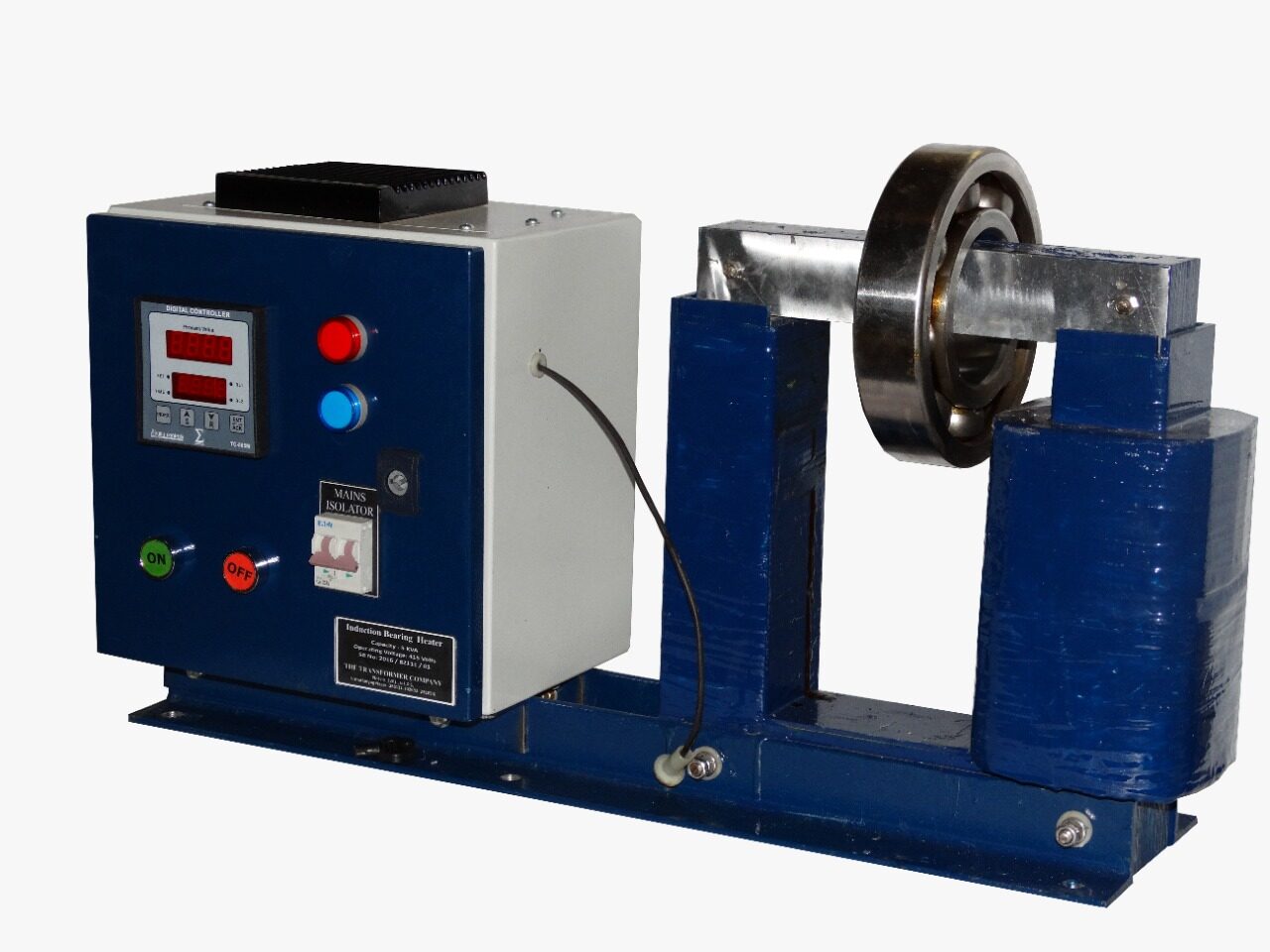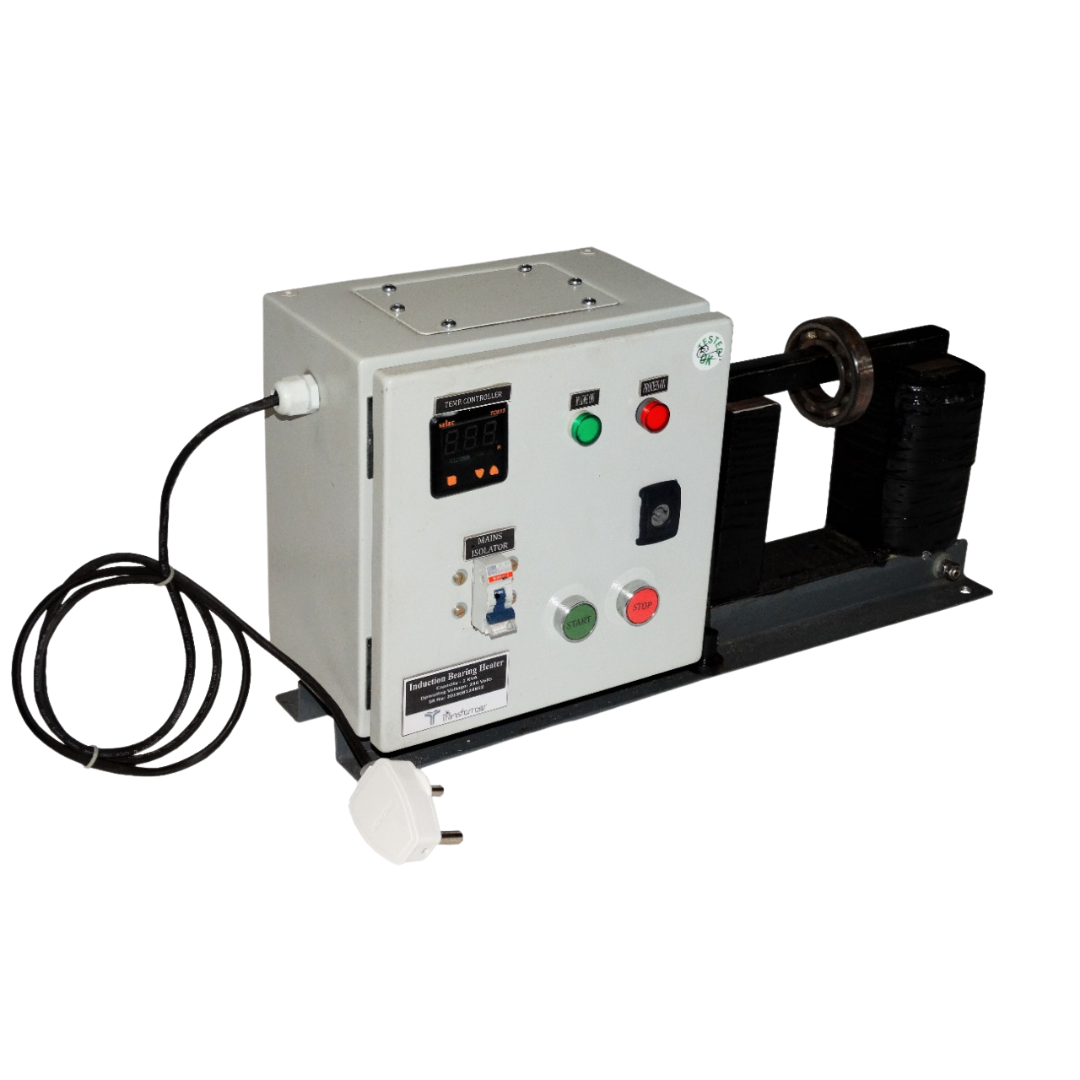

Induction Heating
What is Induction Heating?
Induction heating is a fast and efficient contactless method for heating conductive materials such as metals and semiconductors by applying a fluctuating magnetic field.
Recently, it has become one of the preferred heating technologies for industrial, medical, and domestic applications due to its advantages over traditional heating techniques (resistance heating, flame heating, ovens, furnaces, etc.). Induction heating is particularly useful for performing highly precise or repetitive operations.
Basics of Induction Heating
In induction heating, an alternating current (AC) source is used to supply current to an induction heating coil. As a result, the coil generates an alternating magnetic field. When an object is placed in this field, two heating effects occur:
Hysteresis Losses – these occur only in magnetic materials such as iron, nickel, cobalt, etc. due to the friction between the molecules when the material is being continuously magnetized in different directions. Higher magnetic field oscillation frequency results in faster particle movement, which causes more friction and thus more heat.
eddy-current losses – these occur as a Joule heating effect in any conductive material because of the electric currents induced by the fluctuating magnetic field.
Both effects result in heating of the treated object but the second one is most commonly the main heat source in Induction Heating processes. Moreover, hysteresis is not observed in non-magnetic materials, and magnetic materials lose their magnetic specificities if heated above a specific temperature (the so-called Curie point).
Eddy currents also depend on the magnetic field frequency due to the skin effect – at high frequencies, the currents flow close to the conductor surface. This specificity is used to control the penetration depth of the induction heating process. As a result, either the whole object or only a specific part of it (only the surface, for example) can be heated. Thus, induction heating can be used for different applications – from metal melting to brazing and surface hardening.
Advantages of Induction Heating
Compared to some of the classic heating techniques (resistance heating, flame heating, furnaces, etc.), induction heating has the following advantages:
reduced time – via induction heating, the target is heated directly resulting in a reduction of both heating time and wasted heat. This method provides high power density and low or no thermal inertia.
high efficiency – efficiency values higher than 90% are obtained due to the proper design of the power converter and the coil. In addition, high temperatures can be reached quickly and easily as the ambient heat loss is significantly reduced.
improved control – precise regulation of the heating power can be achieved via appropriate coil design and control of the power converter. As a result, additional features such as local heating, and pre-heating, predefined temperature profiles may be implemented.
industrial automation option – induction heating allows improvement of both the productivity and the quality of the processes. Quality is additionally guaranteed as the heating is contactless (no interference by the heating tool).
safety and cleanliness – there is no thermal or air pollution as the target is heated directly and no fuel substances are used.
History of Induction Heating
Induction heating was first discovered by Michael Faraday as he studied the induction of currents in wires by a magnet. The fundamental principles of induction heating were later established and developed by James C. Maxwell in his unified theory of electromagnetism. James P. Joule was the first to describe the heating effect of a current flowing through a conductive material.
In 1887, Sebastian Z. de Ferranti proposed induction heating for metal melting and filed the first patent on the industrial applications of induction heating. The first fully functional induction furnace was presented in 1891 by F. A. Kjellin and the first high-frequency furnace application of induction heating was implemented by Edwin F. Northrup in 1916.
During the Second World War and afterward, the use of induction heating technology was boosted by the aircraft and the automotive industries. Induction heating was not only used for metal melting but also for advanced material treatment, which significantly increased the range of induction heating applications.
The development of solid-state generators using new power semiconductor technologies provided the potential for IH beyond the industrial environment. Since the late 1980s, different domestic applications have appeared. In recent years, a special interest in induction heating for medical treatments has appeared, as this method provides precise and targeted local heating.
Today, induction heating technology provides highly efficient and reliable systems for a wide variety of applications.
Induction Bearing Heater
- Hot mounting for expansion of the bearing bore to overcome the interference fit when mounting a bearing directly on a cylindrical shaft.
- Safe mounting, e.g., excluding the use of potentially dangerous cold mounting with a press.
- An alternative to the often-inappropriate cold mounting techniques, such as hammering on the outer ring of the bearing.
Selection of the appropriate heater size is determined through a review of the workpiece that would be heated – the shape and dimensions, the mass, the metallurgical characteristics, the required temperature or interference fit to overcome and the frequency of the heating process (number of bearings or workpieces to be heated per day).
Motor Frame – Stator Coil Assembly Machine
This is a special type of induction Heater used to fit the Aluminium Motor frames of the Motor on the Stator Coil.
